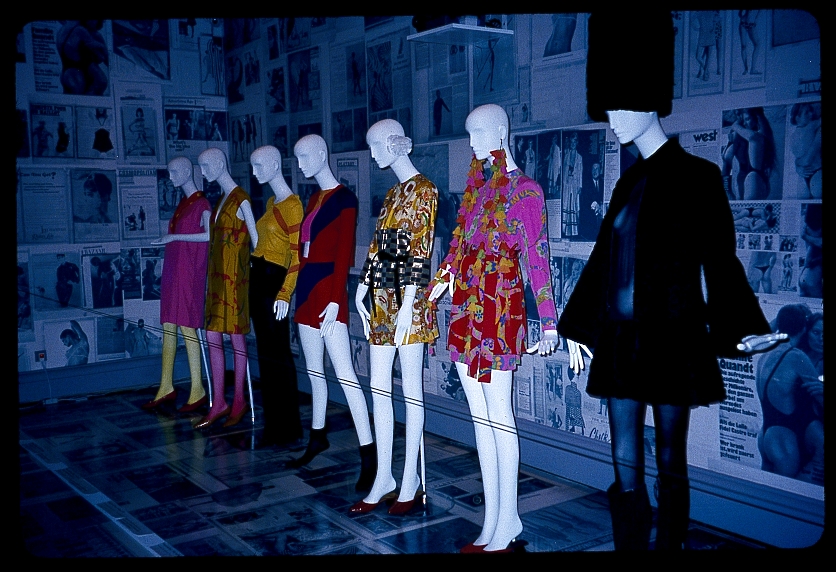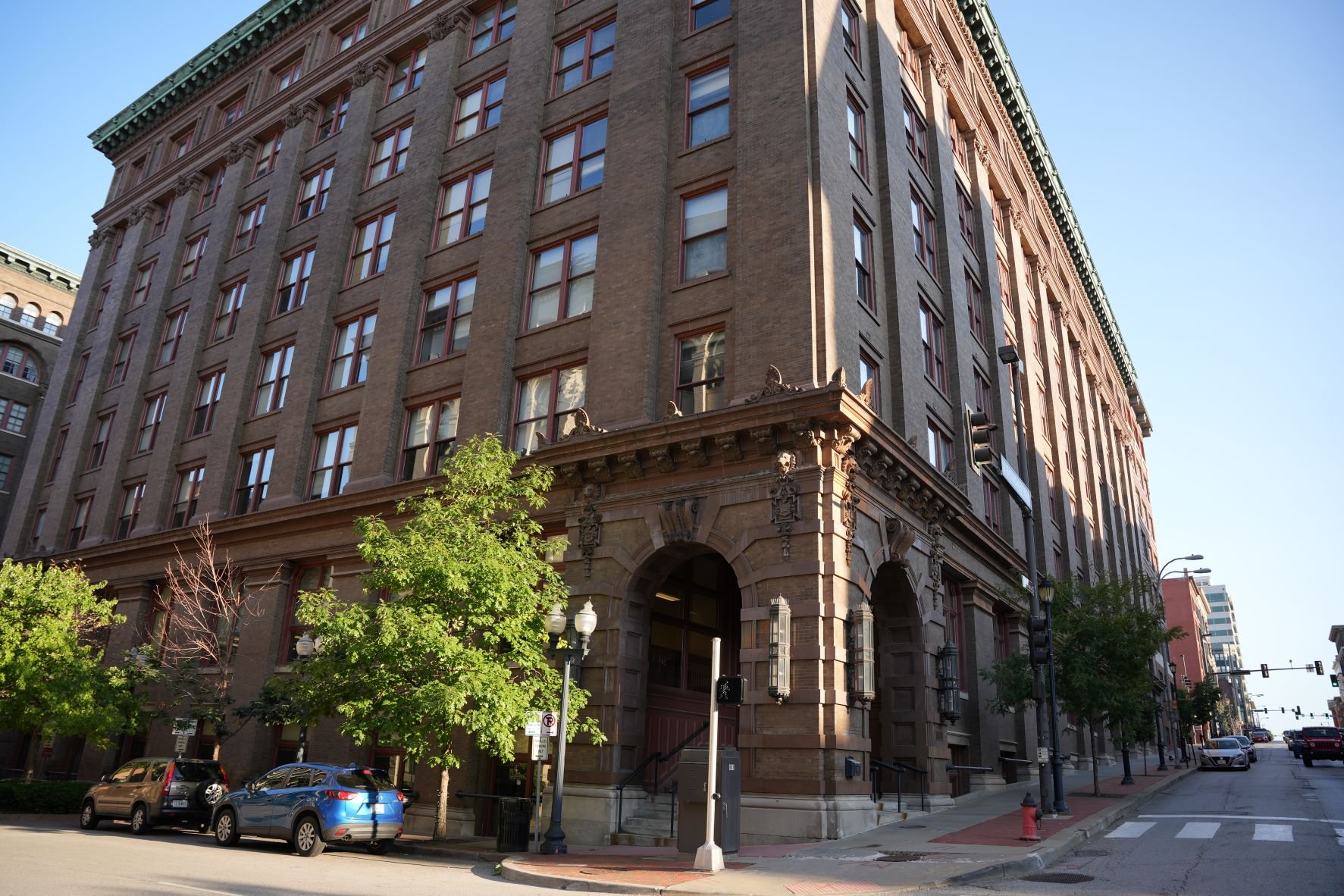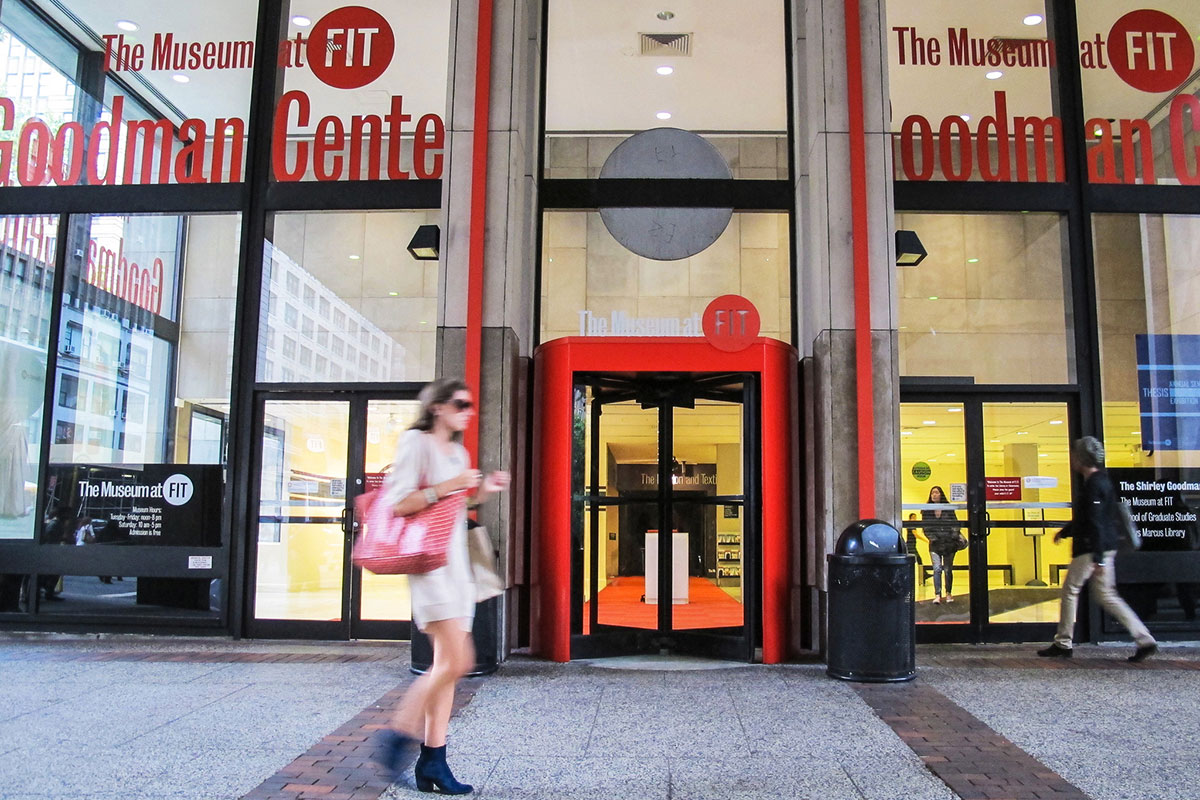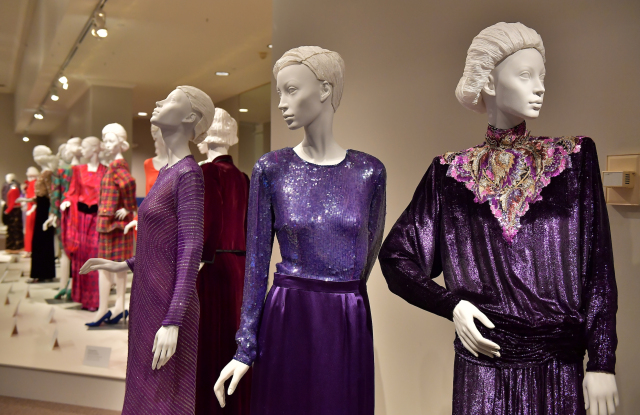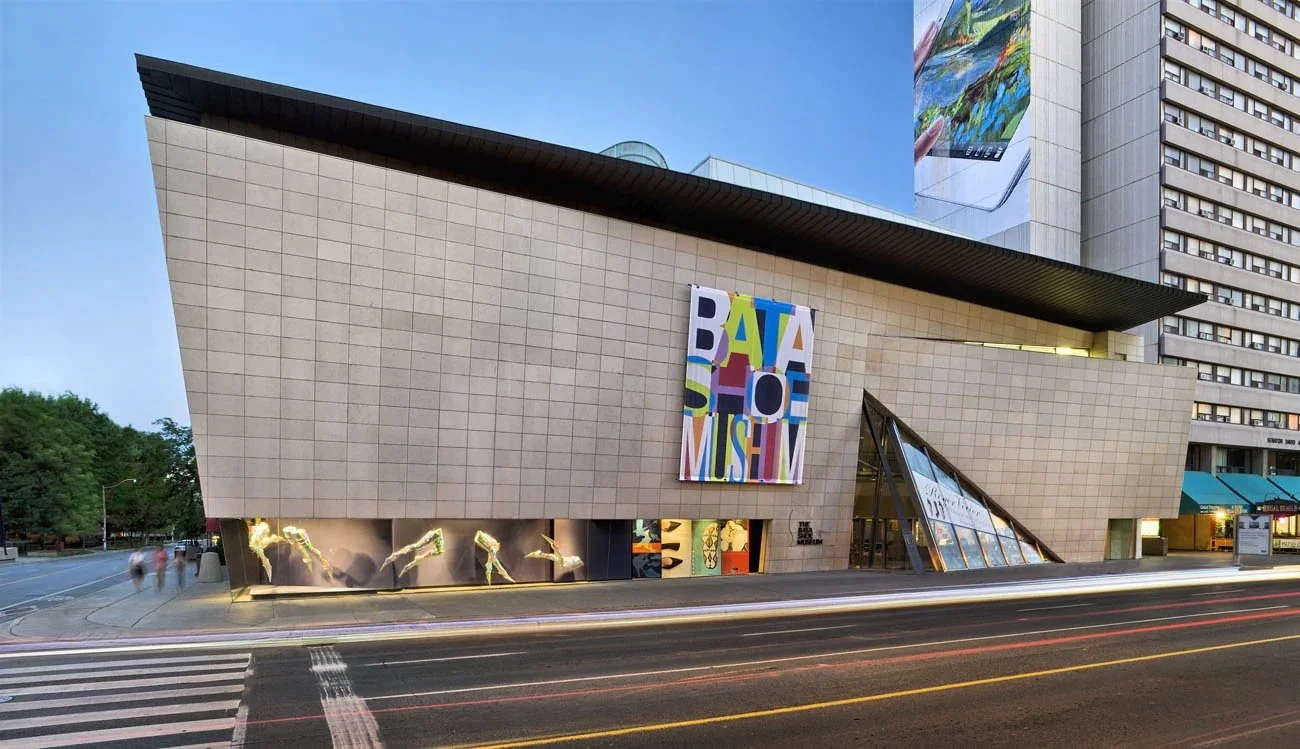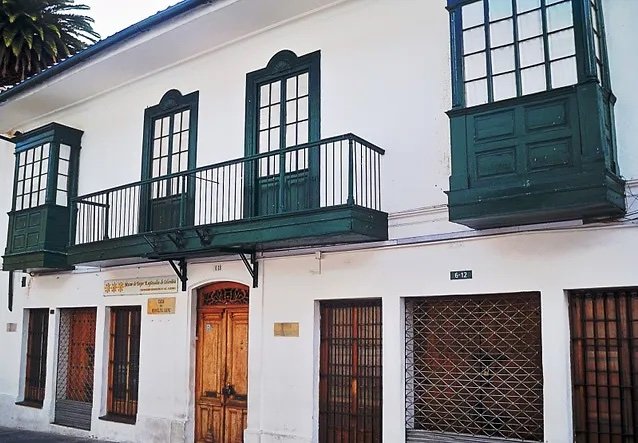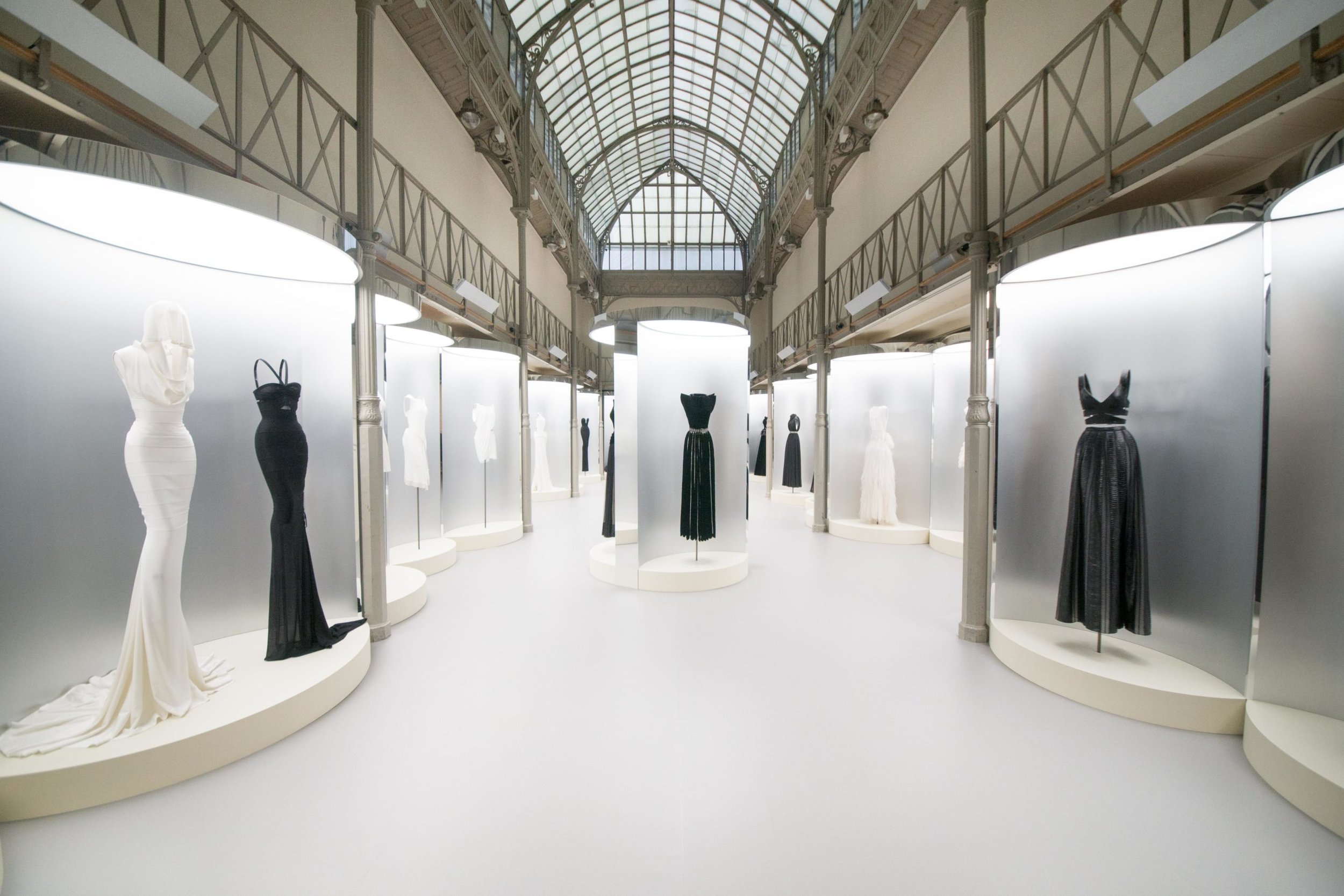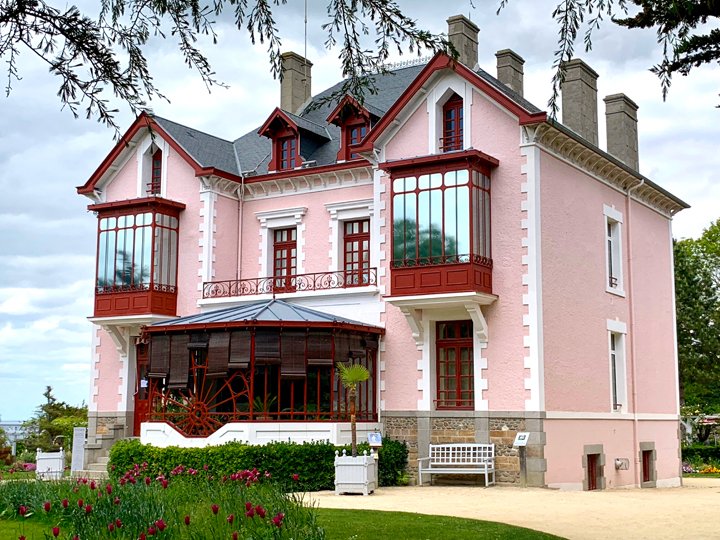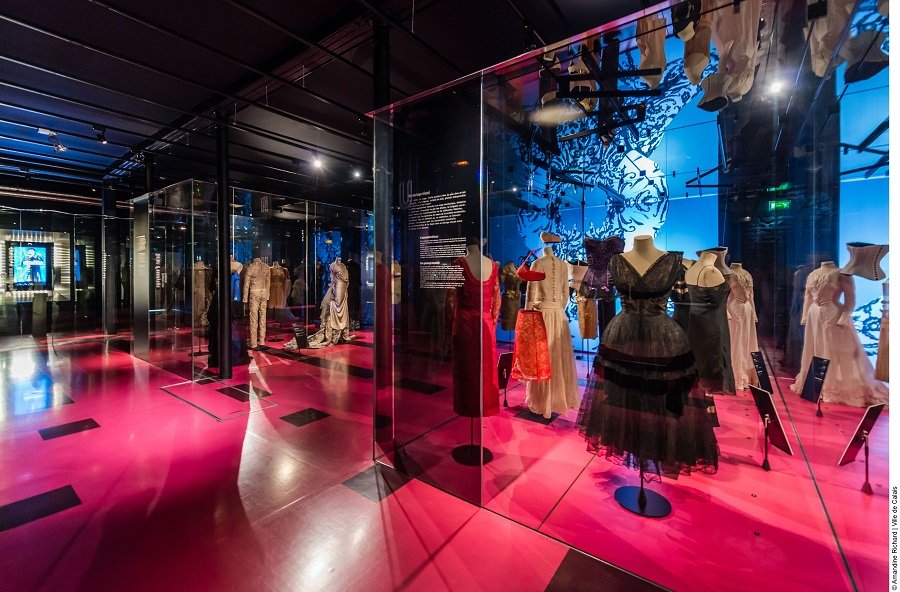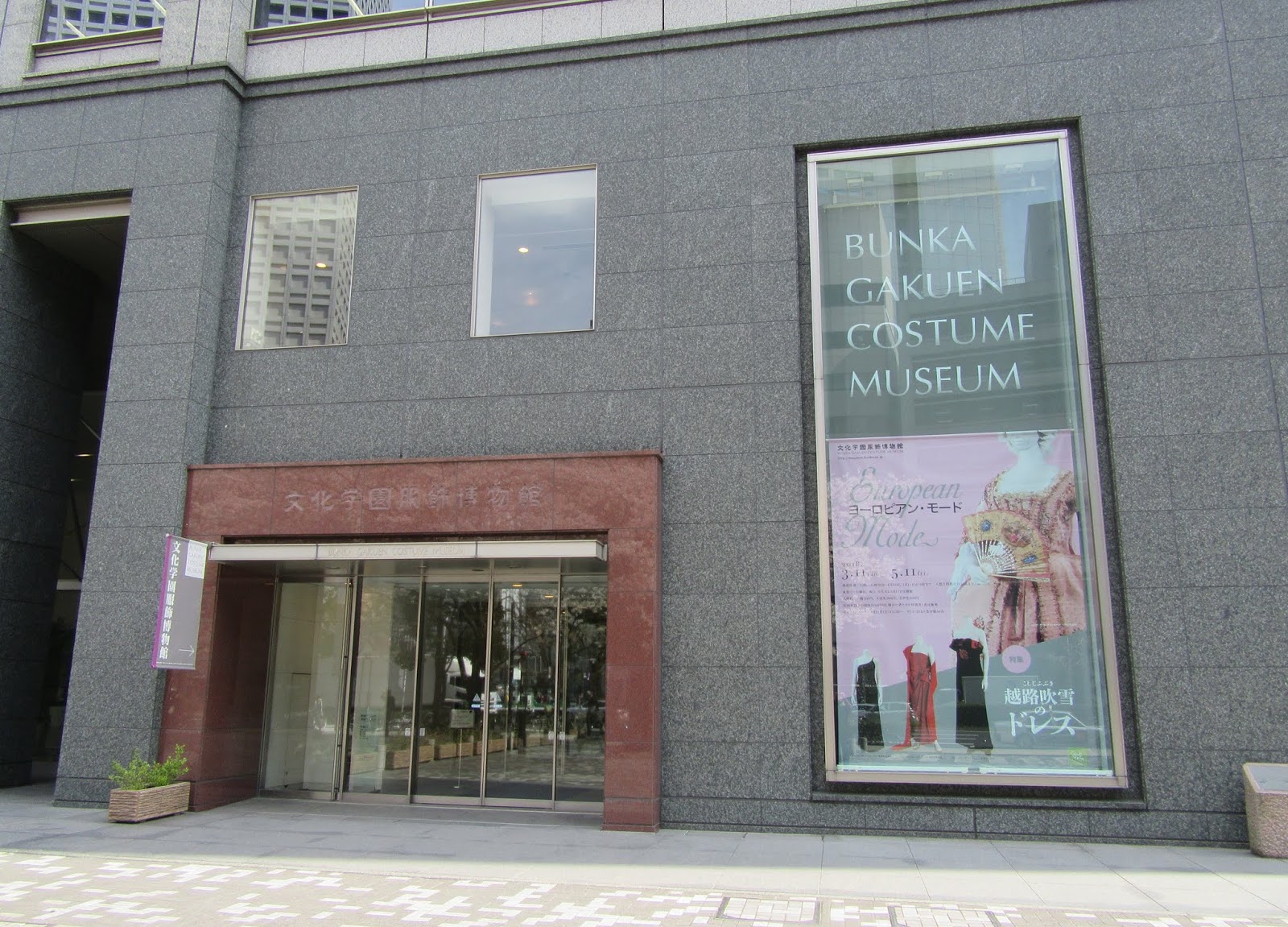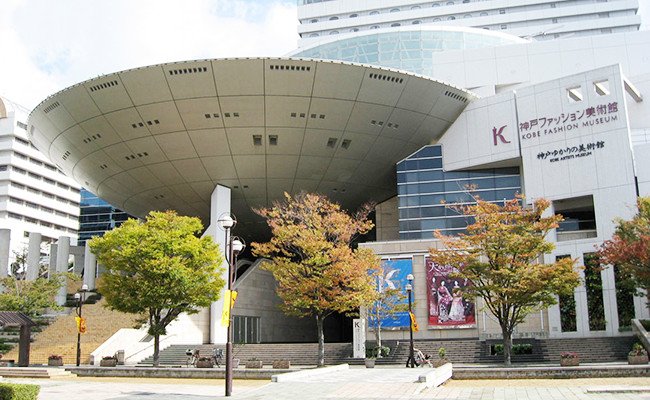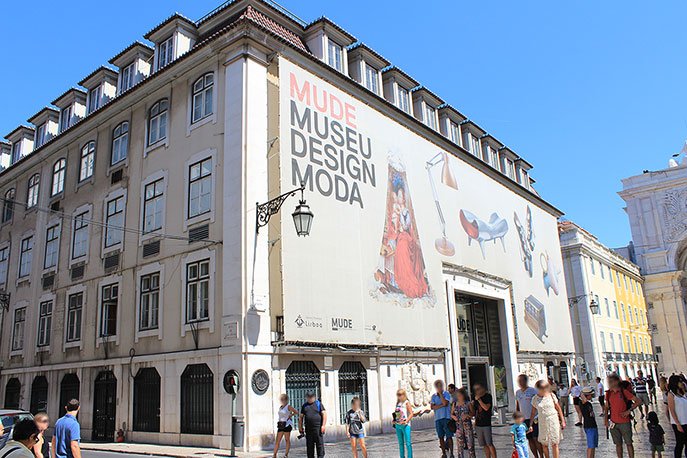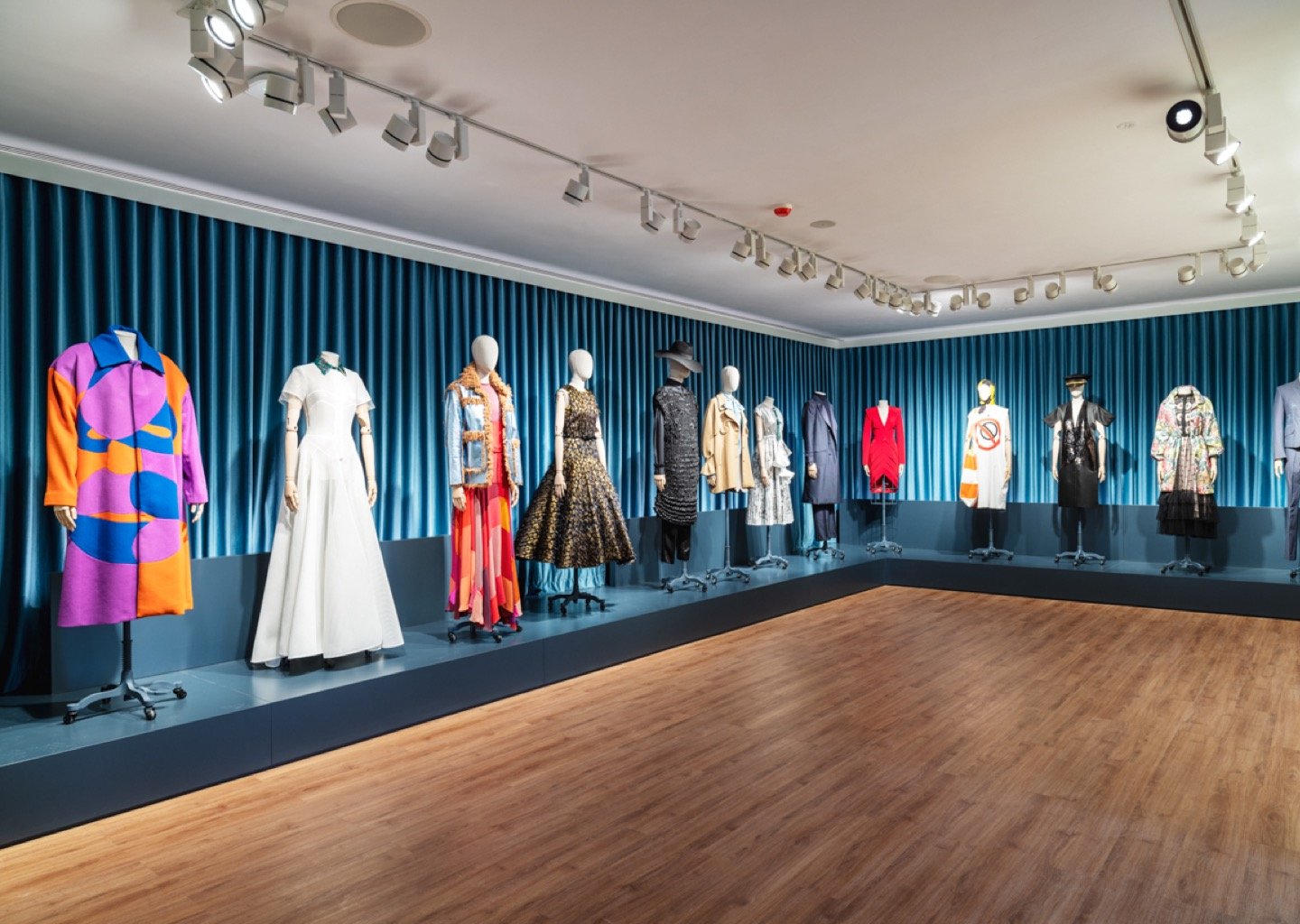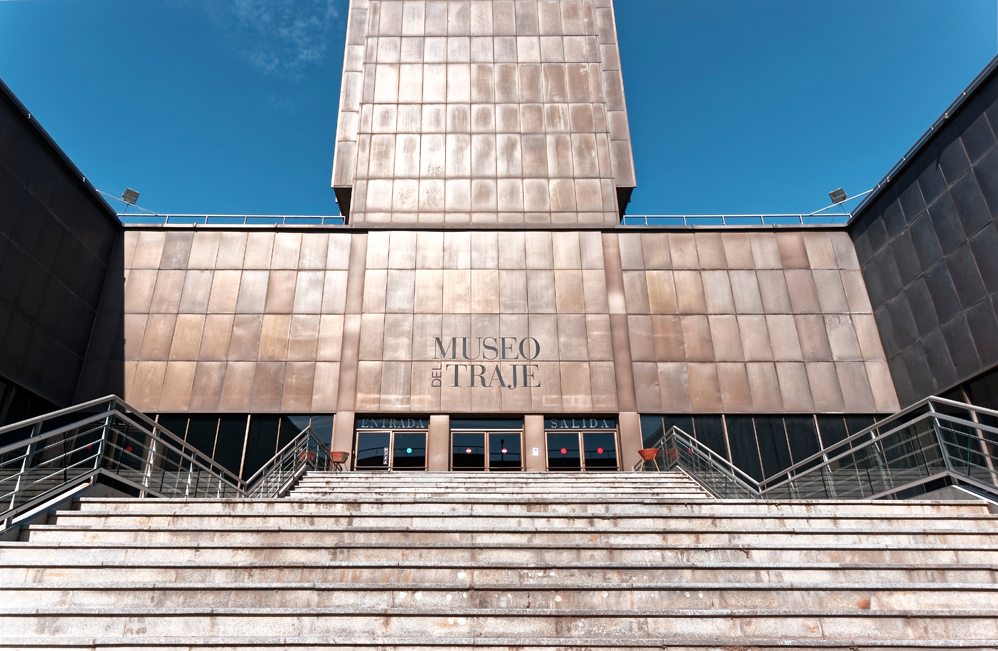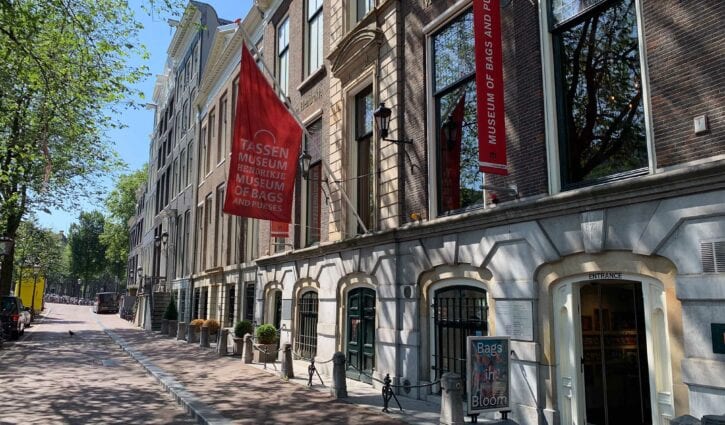U.S.A.
ESSE Purse Museum 1510 Main Street
Little Rock, ARKANSAS
72202
ESSE Purse Museum & Store is the culmination of owner Anita Davis’ dream of exploring concepts of art, history, and the feminine. The name ESSE comes from the Latin infinitive for “to be,” which embodies what visitors will find in the museum: that a purse is not just a utilitarian bag in which a woman carries her necessities, but an extension of her personal space, her essence, and of the things that make her “her.” Visitors will discover that the choice of purse tells much about the woman and her evolving position in the public sphere.
Fashion Institute of Design & Merchandising Museum and Galleries
919 South Grand Avenue, Suite 250
Los Angeles, CALIFORNIA, 90015
The FIDM Museum Collections currently hold over 15,000 objects covering more than 200 years of history. Because the Museum focuses on the design merits of high fashion, most of the collections are dedicated to fashionable women’s dress, and acquisitions are determined primarily by how well an object represents its time period and a designer’s oeuvre. The collection also includes folk dress and non-Western garments. Accessories are another vital component, exhibited separately or used for head-to-toe mannequin dressing, helping to establish a complete understanding of how fashion is worn.
SCAD FASH Museum of Fashion + Film
1600 Peachtree St. NW
Atlanta, GEORGIA 30309
SCAD FASH Museum of Fashion + Film celebrates fashion as a universal language, garments as important conduits of identity, and film as an immersive and memorable medium. Situated within the SCAD Atlanta campus at 1600 Peachtree St. NW, SCAD FASH focuses on the future of fashion design, connecting conceptual to historical principles of dress — whether ceremonial, celebratory or casual — and welcomes visitors of all ages to engage with dynamic exhibitions, captivating films and educationally enriching events.
The Historic Garment District Museum 801 Broadway Boulevard Kansas City, MISSOURI 64105
The Historic Garment District Museum was founded and opened in 2002 by Ann Brownfield and Harvey Fried. Kansas City’s Garment District (an area defined as between 6th and 11th Streets, and Washington and Wyandotte Streets) rose up around the wholesale business area of the City’s downtown after World War I and grew steadily to become, at its peak, one of the largest garment districts in the nation and the second largest industry and employer (of women) in Kansas City. The Garment District Collection highlights companies that helped make up Kansas City’s Garment District. At any time, approximately 20-25 items are on display of the more than 350 garments and accessories, made by local companies from the 1920s through the 1980s and includes numerous objects such as sewing equipment and advertising pieces.
The Costume Institute at The Metropolitan Museum
1000 Fifth Avenue
New York, NEW YORK
10028
The Costume Institute's collection of more than thirty-three thousand costumes and accessories represents five continents and seven centuries of fashionable dress and accessories for men, women, and children, from the fifteenth century to the present. Behind the scenes is a state-of-the-art costume conservation laboratory; a study/storage facility to house the combined holdings of The Costume Institute and Brooklyn Museum Costume Collection; and The Irene Lewisohn Costume Reference Library, one of the world's foremost fashion libraries.
The Museum at The Fashion Institute of Technology
227 W 27th Street
New York, NEW YORK
10001
The museums permanent collection encompasses some 50,000 garments and accessories from the 18th century to the present. Important designers such as Adrian, Balenciaga, Chanel, and Dior are represented. The collecting policy of the museum focuses on aesthetically and historically significant directional clothing, accessories, textiles and visual materials, with emphasis on contemporary avant-garde fashion.
Kent State University Museum
515 Hilltop Drive
Kent, OHIO 44242
The Kent State University Museum welcomes students and the general public to view, study and research from its collection of historic, contemporary, and world fashions. The collection goes beyond clothing and textiles to also include American glass, furniture, paintings and other decorative arts. The Museum also houses a library of books and historic periodicals dedicated to fashion and decorative arts. The Museum’s permanent collection features over 20,000 objects. Among them are the important fashion collection, which includes costumes and textiles from the 18th century to the present.
BELGIUM
Fashion & Lace Museum
Rue de la Voilette 12
1000 Brussels, BELGIUM
A textile and fashion museum located in Brussels focused on lace, a traditional Belgian craft. Founded in 1977, the museum has exhibitions of antique lace, the process of lacemaking, and also hosts temporary exhibits around historical and contemporary fashion.
Fashion Museum Hasselt
Gasthuisstraat 11, 3500
Hasselt, BELGIUM
Housed in a 17th century convent, them museum possesses more than 15,000 items including clothes, shoes, and accessories from 1750 until the present, spanning from unique, haute couture pieces to ready to wear clothes. The Fashion Museum of Hasselt provides an opportunity to connect the region’s unique socio-cultural history to the fashion world.
MoMu
Nationalestraat 28
2000 Antwerp, BELGIUM
MoMu's collection policy focuses on the work of Belgian designers and alumni of the Fashion Department of the Royal Academy of Fine Arts in Antwerp. Prominent names from the contemporary international fashion world are also represented in the collection. The collection grows every year through acquisitions, loans, and numerous donations, and now consists of over 33,000 pieces. This makes the MoMu collection the largest and most important collection of contemporary Belgian fashion in the world.
CANADA
Bata Shoe Museum
327 Blood Street West
Toronto, Ontario, CANADA
M5S 1W7
The Bata Shoe Museum regularly displays over a thousand shoes and related artifacts, chosen from a collection of over 13,000 objects, in architect Raymond Moriyama’s iconic, award-winning building. The BSM celebrates the style, development and function of footwear across four impressive galleries, with displays ranging from Chinese bound-foot shoes and ancient Egyptian sandals to chestnut-crushing clogs and glamorous platforms.
Costume Museum of Canada 410-70 Arthur Street Winnipeg MB, R3B 1G7, CANADA
The Costume Museum of Canada is Canada's first museum dedicated to the collection, preservation and presentation of clothing and textiles. The collection reflects the identity and social history of Canadians urban and rural, public and private. The collection of 35,000 artifacts is stored in Winnipeg and includes men's women's and children's clothing, accessories and miscellaneous accoutrements. The Museum gallery was closed to the public in 2010 but we continue to offer programs which make the collection available to the public. The programs include pop-up exhibits, heritage fashion revues, hat shows and educational programs.
Fashion History Museum
74 Queen Street East,
Cambridge, Ontario, CANADA
N3C 2B1
The collection consists of over 12,000 garments and accessories dating from the 1660s to the present. Alongside historical dress, the museum is building a contemporary Canadian designer collection as well as a comprehensive library and archives of fashion related publications and documents.
CHILE
Museo de la Moda
Av Vitacura 4562, Vitacura
Region Metropolitana, Santiago CHILE
Located in the former residence of the Yarur Bascuñan family, a wealthy Chilean-Palestinian family dedicated to the textile market, the museum boasts a modern and minimalist design with aspects reminiscent of Japanese architecture. The museum collection has more than 10,000 pieces belonging to the legacy of the Yarur family, focused on the ’60s and with some acquisitions and donations that complete the material on display.
COLOMBIA
Museo de Trajes Cl. 10 #6-26 Bogota, COLOMBIA
The Costume Museum belongs to the Heritage Unit of the University of the America. The museum is located in the historic center of Bogotà, in the Candelaria neighborhood, very close to the Plaza de Bolivar. It was founded and opened to the public in 1975 by Edith Jiménez de Muñoz, anthropologist of the first class of this discipline in the country. The museum is a teaching, research and outreach space that aims to preserve, exhibit, and communicate the richness and diversity of the clothing and textiles of the peoples of Colombia and the world.
FRANCE
Fondation Azzedine Alaia 18 Rue de la Verrerie 75004 Paris, FRANCE
Azzedine Alaïa lived a life filled with fashion, art, design, architecture, music and theatre. For over fifty years, he had been an avid collector in all creative and cultural disciplines. The Azzedine Alaïa Foundation exhibits the work of Azzedine Alaïa and the works of art from his personal collection. The Foundation also fulfills an educational mandate via collaborations with fashion schools and institutions, the Foundation will host conferences and research programs on the Alaïa collection, rich in over 35,000 pieces.
La Galerie Dior 11 Rue Francois Ler Paris 8e, FRANCE
It is within these walls that the Dior Collections have been created for more than 70 years, starting with the iconic New Look, a revolutionary event in the history of fashion. Multiple sources of inspiration are presented: from the splendor of gardens to the sumptuousness of balls, the beauty of the petites mains’ gestures, and artistic affinities, with each space evoking one of the many facets of the priceless heritage that the House of Dior has preciously preserved since its founding and continues to enrich. La Galerie Dior reflects the singularity of this House, which, more than any other, is aware of the richness of its past, a priceless source of inspiration for Dior’s Creative Directors as they seek to capture the spirit of their time and reveal, as Christian Dior put it, “women’s secret aspirations.”
Musée Christian Dior
Villa les Rhumbs
Rue d'Estouteville
50400 Granville, FRANCE
Villa "Les Rhumbs", Christian Dior's childhood home in Granville, is a Belle Epoque style 19th century clifftop villa overlooking the sea. It is the only "Musée de France" labeled French museum dedicated to a couturier and presents, for ten years already, Haute Couture garments on three floors. The garden, arranged as an English landscape park by Madeleine Dior, the fashion designer's mother, is one of the rare today remaining artists' gardens of the early twentieth century.
Musée des Arts Décoratifs
107 Rue de Rivoli,
75001 Paris, FRANCE
When the Musée des Arts Décoratifs was founded, it already owned a large textile collection. In 1948, another institution – the Union Française des Arts du Costume (UFAC) – was set up by costume professionals on the initiative of historian François Boucher. In 1981, it was decided to combine the collections of the UFAC and the Musée des Arts Décoratifs, and as a result, the Musée des Arts de la Mode was inaugurated in 1986. In 1997, under its new name – the Musée de la Mode et du Textile – it was incorporated into the Musée des Arts Décoratifs, becoming one of its principal departments. Today’s collection comprises over 152,800 pieces including costumes, accessories and textiles from the third century to the present day.
Musée Yves Saint Laurent Paris
5 avenue Marceau
75116 Paris, FRANCE
The Musée Yves Saint Laurent Paris exhibits the couturier’s body of work on the legendary premises of his former haute couture house, alternating between retrospective displays and temporary thematic exhibitions. The museum focuses on both the couturier’s creative genius and the process of designing a haute couture collection. Beyond its monographic ambitions, the museum seeks to address the history of the twentieth century and the haute couture traditions that accompanied a way of life that no longer exists.
Palais Galliera
10 avenue Pierre 1er de Serbie,
Paris 16e, 75116 FRANCE
Since 1977, the City of Paris has operated the Palais Galliera as the Musée de la Mode de la Ville de Paris, a permanent museum devoted to fashion. It displays exhibits of French fashion design and costume from the eighteenth century to the present day. The museum is closed in between exhibitions. The museum's holdings contain about 70,000 items including 18th century costume, an excellent collection of undergarments, and accessories.
The Museum for Lace and Fashion 135, quai du Commerce 62100 Calais, FRANCE
The Museum for Lace and Fashion is established in one of the last collective lace factories typical of the late nineteenth century in Calais, in the heart of the Saint-Pierre district, a district entirely dedicated to lace making. Between 1988 and 1998, the town of Calais acquired the Boulart factory in order to create a centre celebrating the know-how of the lace makers, local economic and social history and the uses of lace in contemporary fashion and design.
GUATEMALA
Ixchel Museum of Indigenous Dress
6 calle final, zona 10, Centro Cultural UFM
Cuidad de Guatemala, GUATEMALA
The Ixchel Museum of Indigenous Dress is a non-profit institution that collects, registers, catalogs, conserves, examines, exhibits, and promulgates Guatemalan indigenous dress. Founded in 1973, the museum has a well-documented textile holding built almost exclusively on textile donations from Guatemalan collectors.
ITALY
Gucci Museo
Piazza della Signoria, 10, 50122
Firenze, ITALY
The Gucci Museum is the story of the Italian fashion and leather goods manufacturer, from its early start in the city of Florence to the global biggest-selling Italian brand that it is today. The building contains a permanent exhibition of iconic pieces, such as bags, clothes, and accessories, among many others. In addition to a series of contemporary art installations, it contains a library, a cafeteria, a small boutique and the new Gucci Osteria da Massimo Bottura. The museum is located in the historic Palazzo della Mercanzia (Palace of the Merchandise).
Museum of Costume and Fashion
Piazza de' Pitti, 1, 50125
Firenze, ITALY
The Museum of Costume and Fashion (formerly known as the Costume Gallery) is located in the Palazzina della Meridiana next to the southern wing of Pitti Palace. Founded in 1983, it was the first State museum in Italy dedicated to the history of fashion and its social significance. Its collections include clothes and accessories as well as underwear, jewellery and costume jewellery, dating from the 18th century to today. The 16th-century funeral clothing of Cosimo I de’ Medici, Eleonora of Toledo and their son Garzia de’ Medici has been completely restored and is part of the permanent collection on display.
Salvatore Ferragamo Museum
Piazza di Santa Trinita, 5, 50123
Firenze, ITALY
Dedicated to the life and work of Italian shoe designer Salvatore Ferragamo and his eponymous company, the museum contains 10,000 models of shoes created and owned by Ferragamo from the 1920s until his death in 1960. The museum also includes films, press cuttings, advertising materials, clothes and accessories from the 1950s to the present day.
JAPAN
Bunka Gakuen Costume Museum
3-chōme-22 Yoyogi, Shibuya City,
Tōkyō-to 151-0053, JAPAN
The collection at Bunka Gakuen Costume Museum consists of items that were obtained with the intention of enriching education on the westernization of clothing. Initially, the collection mainly consisted of European dresses, early Japanese western style clothing, and kimonos. After the Second World War, the museum received garments from East and South East Asia which were obtained before the war by an organization affiliated with the Japanese army. This formed the basis of the museum’s traditional ethnic clothing collection.
Kobe Fashion Museum
2 Chome-9-1 Koyochonaka,
Higashinada Ward,
Kobe, Hyogo 658-0032, JAPAN
Kobe Fashion Museum is the first museum in Japan to specialize in fashion. The library located on the third floor houses various materials of high value related to fashion, all of which are open to the public as well as students, creators, and business people engaged in the fashion field.
The Kyoto Costume Institute
103, Shichi-jo, Goshonouchi Minamimachi, Shimogyo-ku
Kyoto, JAPAN
The Institute has been systematically collecting since 1978 historical vestments, modern clothing, and fashion accessories of the Western world and Japanese fashion of the 17th to 21st centuries. The foundation designs fashion exhibitions, which are shown worldwide in fashion and art museums. The collection ranges from courtly dresses of the 17th century to contemporary fashion by international fashion designers. The institute's collection comprises about 12,000 pieces of clothing and 16,000 documents on fashion history.
MOROCCO
Musée Yves Saint Laurent Marrakech
Rue Yves Saint Laurent
40090 Marrakech
MOROCCO
The museum’s exhibition hall features the work of Yves Saint Laurent, another is dedicated to Jacques Majorelle, and an auditorium with 13 seats. It also has a gift shop and book store, a café-restaurant with a patio, and a research library with over 5,000 volumes including Andalusi works dating back to the 12th century as well as books on botany, and Amazigh art. The museum is located on a street already named after the designer near the Jardin Majorelle.
NEW ZEALAND
Established in 2010 by Doris de Pont, the museum records and shares the stories of the people, objects and images that have contributed to the development of New Zealand's unique fashion identity. It makes them visible and accessible to a broad audience through pop-up exhibitions, publications and our online museum. The museum has no fixed abode other than their online address.
PORTUGAL
National Costume Museum
Largo Júlio Castilho
1600-483 Lisbon
PORTUGAL
The National Museum of Costume (Museu Nacional do Traje), created in 1976, presents to the public a collection of historical costumes, garments and accessories, dating from the XVIII century to the present day, either in permanent or temporary exhibitions. The collection is housed in the Angeja-Palmela Palace with, on its grounds, the Monteiro-Mor Botanic Park.
MUDE Museu do Design e da Moda Rua Augusta Nº24 1100-053 Lisbon PORTUGAL
The design collection consists of works by some 230 designers representing trends in design from around the world. There are pieces by design icons such as Phillipe Starck, Charles Eames, George Nelson, Arne Jacobsen, Paul Henningsen, Vener Panton, Masanori Umeda, Henning Koppel, and Tom Dixon, and includes almost 200 design classics embracing innovative furnishings, glass, and jewelry from 1937 to the present.
Porto Fashion & Fabric Museum R. do Barão de Forrester 412 4400-088 Vila Nova de Gaia PORTUGAL
Located in the WOW (World of Wine) block, in the heart of the historic center of Vila Nova de Gaia, the Porto Fashion & Fabric Museum focuses on the textile industry in Portugal. Visitors can learn about the importance of this sector in the development of the Northern region of Portugal, as well as in the national economy. Visitors will find a timeline with the most relevant chronological moments in the history of the Portuguese textile industry from the 16th century to the present day. The second floor is dedicated to Portuguese designer fashion, national footwear and filigree (a Portuguese art of welding fine metal wires in order to compose a design).
SOUTH KOREA
Simone Handbag Museum
17 Dosan-Daero 13 Gil (Sinsa-Dong),
Gangnam-gu, Seoul, 135-889,
SOUTH KOREA
The museum is divided into two halves, Twentieth Century and Contemporary, and Historic (1500-1900). The museum opened on 19 July 2012 in Seoul's Gangnam District, in a building resembling a handbag. The 10 story building is call Bagstage. Bagstage also incorporates a shop selling bag materials, workshops where new Korean designers can work rent free, a section where craftsmen produce bags, and two shops. Bespoke mannequins at the museum have been designed to draw the visitors' attention to the bags on display.
SUNY Korea Museum of Modern Costume Academic Building AB101 SUNY Korea 119-2 Songdo Moonhwa-Ro Incheon SOUTH KOREA
SPAIN
Cristóbal Balenciaga Museoa
Aldamar Parkea Parkea, 6, 20808
Getaria, Gipuzkoa, SPAIN
The museum is a public institution dedicated to conserving, researching and transmitting the figure and work of fashion designer Cristóbal Balenciaga, in his native town of Getaria. Opened in June 2011, the museum continuously organizes exhibitions and programs related to the couturier and the world of fashion, housing one of the biggest collections of works by this famous creator.
The Design Museum of Barcelona
Plaça de les Glòries Catalanes 37
08018 Barcelona SPAIN
The Design Museum of Barcelona is the result of the merging of several existing museums. It was built to be the center of the Institute of Culture which works to create a better understanding and good use of design. The Costume and Textile collection includes countless objects and pieces of major artistic and historical value that make up their collections of garments, fabrics and jewelry. Regarding their collection of clothes, the museum allows you to take a journey through the history of textiles, from the 16th century right up to the modern day. The museum’s collections include Coptic, Hispano-Arab, Gothic and Renaissance fabrics, as well as embroidery, a section on lacework and a collection of prints.
The Garment Museum
Avenida de Juan de Herrera 2
28040 Madrid
SPAIN
The Garment Museum is an institution that was created in 2004, although its collections have been shown in other museums since 1925, principally in the Regional and Historic Garment Museum. In 2004, almost eighty years after the creation of that Museum, the current Garment Museum was created to bring together the collections that were scattered throughout other museums.
THAILAND
Queen Sirikit Museum of Textiles
Ratsadakhorn-bhibhathana Building
The Grand Palace, Phra Nakhon
Bangkok 10200
THAILAND
The museum’s mission is to collect, display, preserve, and serve as a center for all who wish to learn about textiles, past and present, from Southeast Asia, South Asia, and East Asia, with a special emphasis on the textiles of, and related to, the royal court and Her Majesty Queen Sirikit. Additionally, its goal is to create public awareness of Thai identity and culture, and the beauty of Thai traditional textiles, through research, exhibition, and interpretation.
THE NETHERLANDS
Dutch Costume Museum
Herengracht 427
1017 BR Amsterdam
THE NETHERLANDS
A museum showcasing folk costumes and a rich cultural history of The Netherlands. Amazing colors and beautiful craftsmanship are presented mostly with women’s clothes - blouses, hats, dresses, shoes but also some clothing for men and children. The Dutch Costume Museum presents its exceptional collection of Dutch vintage clothes on mannequins.
Fashion for Good
Rokin 102
1012 KZ Amsterdam
THE NETHERLANDS
The world’s first interactive museum for sustainable fashion innovation, Fashion for Good shares ideas for taking action to change the future of fashion, both on a personal and industry level. Their mission is to bring together the entire fashion ecosystem through innovation and to be a convenor for change.
Museum of Bags and Purses
Herengracht 573
1017 CD Amsterdam
THE NETHERLANDS
Devoted to the history of bags, purses, and their related accessories, the museum’s collection includes over 5,000 items dating back to the sixteenth century. Located in Amsterdam’s historic central canal belt in a traditional 17th century home on the Herengracht. The museum began as a private collection of antique dealers, Hendrikje and Heinz Ivo from Amstelveen.
UNITED KINGDOM
Fashion and Textile Museum
83 Bermondsey Street
London SE1 3XF THE UNITED KINGDOM
The Fashion and Textile Museum Collection highlights the changing face of contemporary fashion from 1947 to the present day. All items in the Collection relate to the design and production of fashion, textiles and jewellery, with a number of key garments from designers including Christian Dior, Balenciaga, Biba, Mary Quant and Vivienne Westwood.
Fashion Museum Bath
Assembly Rooms
Bennett Street, Bath
BA1 2QH
The collection was started by Doris Langley Moore, who gave her collection to the city of Bath in 1963. It focuses on fashionable dress for men, women and children from the late 16th century to the present day and has more than 100,000 objects. The earliest pieces are embroidered shirts and gloves from about 1600.
Victoria and Albert Museum
Cromwell Road
London SW7 2RL THE UNITED KINGDOM
Spanning five centuries, the Fashion collection is the largest and most comprehensive collection of dress in the world. Key items in the collection include rare 17th century gowns, 18th century ‘mantua’ dresses, 1930s eveningwear, 1960s daywear and post-war couture. The collection is particularly strong from the 18th century onwards, containing mainly European fashion and accessories for men and women, together with important items of 19th century dress for the elite in India, China and Japan. The collection also includes a wide range of accessories from across the world, including footwear and hats.


